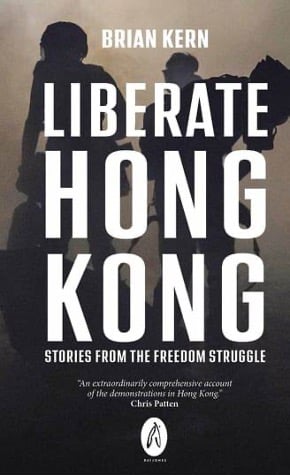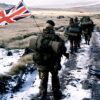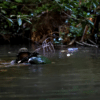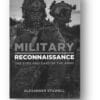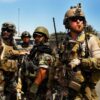ISBN-13: 978-1-7394243-2-9, BUI JONES, 2023, 288 pages, $19.51 (paperback)
Reviewed by: Stephen G. Craft, Embry–Riddle Aeronautical University, Daytona Beach, Florida, USA
To Liberate Hong Kong is an account of the protests in Hong Kong in 2019 in opposition to an extradition bill officially titled the Fugitive Offenders Ordinance and Mutual Legal Assistance in Criminal Matters Ordinance. The author, Brian Kern, is an American citizen and human rights activist who lived there for over a decade before departing for what he calls “exile” in the United States. Kern briefly taught at a school there years earlier, where he encouraged the creation of human rights groups that he claims became student-led and proliferated within Hong Kong’s school system. He also co-hosted a human rights program that was broadcast on a pirate radio station. Since his return to the U.S. in 2020, Kern has given testimony before Congress regarding the CCP’s political repression in Hong Kong. [1]
The book’s title comes from a slogan that emerged after the Umbrella Movement of 2014 when students protested the CCP’s decision to circumscribe universal suffrage in Hong Kong. Unlike previous peaceful protests, the police responded with force and arrests. Kern, who participated in those protests that lasted nearly 80 days, describes the Umbrella Movement as a turning point for the overwhelming majority of young Hong Kongers who became opponents of the CCP. Kern faults the CCP’s efforts to impose control on Hong Kong and assimilate its citizens for radicalizing young people who did not have resistance in their DNA. This included introducing “Moral and National Education,” or what critics called Communist brainwashing, into the school system. Young people felt that the Umbrella Movement failed, with some concluding that it revealed the limits of non-violent demonstrations.
The protests started in March, but on June 9, 2019, over 1 million people engaged in the first mega-march against the extradition bill, with over 3 million participating in 12 acts of protest that month alone. Three days later, approximately 100,000 peaceful demonstrators surrounded the Legislative Council (LEGCO), forcing the postponement of the bill’s second reading. The protesters threatened to escalate the situation if a total recall of the bill did not occur by 3:00 p.m. The call to escalate went out anonymously online. Kern also observes that it was that day that the notion of a “leaderless movement” was born. As he feared, the police struck back at all 100,000 protesters, who were labeled as “rioters.” Kern argues that the police, in their victory, set a pattern that persisted for months: police overreaction provoked a stronger counter-reaction that drew in more supporters as police brutality worsened.
Those protesters who put up barricades, disrupted transportation, wrote graffiti, destroyed pro-CCP businesses, and engaged in direct confrontation with the police were called “frontline protesters.” Kern, an opponent of the use of violence, described the frontline protesters as disciplined: no looting and no attacks on civilians. They laid siege to the police headquarters and occupied LEGCO. Most protesters, however, were non-violent. They used social media, such as Telegram and WhatsApp, to communicate, coordinate, and keep tabs. Citizens showed solidarity by opening their homes to those trying to escape police dragnets, donating money and supplies to protesters, supporting those put on trial, and helping those who were fired from their jobs to find new employment with what became known as the “yellow businesses,” which supported the protests, as opposed to the “blue businesses” that supported the police and the CCP. Students held strikes and engaged in human chain events. Acts of defiance were shown by singing “Glory to Hong Kong” or maintaining Lennon Walls. Frontline protesters were shielded from police attacks by older Hong Kongers who formed Protect the Children, and many aided protesters by serving as medics, cooks, or human mules who hauled supplies in backpacks. Kern described the frontline protesters as the glue that held it all together, but they were, to paraphrase Mao Zedong, the fish, and ordinary people were the water.
By December, the protests seemingly achieved their intended effect. The extradition bill was removed from LEGCO on October 23. On November 24, democracy candidates for the District Council won a landslide victory that gave them 389 out of 452 seats and 17 of 18 district councils. Just days later, Donald Trump signed into law the Hong Kong Human Rights and Democracy Act and the Protect Hong Kong Act, which called for imposing sanctions on Hong Kong and Chinese officials accused of abusing the human rights of people in Hong Kong and prohibited the sale of crowd control equipment to China.
Yet, events also proved more violent and tense. Protesters were injured both by police and hired thugs, and some committed suicide. When a university student died under mysterious circumstances in early November, with some believing it to be police-related, protesters launched Operation Dawn, which sought to paralyze Hong Kong’s transportation. At the Chinese University of Hong Kong, riot police fired everything but live bullets at protesters, who repelled them with Molotov cocktails. Kern believes that the assault on the school crossed a Rubicon: the police were now viewed as one of the CCP’s proxies for cracking down on dissent.
By now, Kern had not only been threatened by thugs but also found himself the target of party-owned newspapers that published articles about him and photographs of him and his children. To protect himself from doxing, Kern assumed the identity of a young Hong Konger named Kong Tsung-gan and wrote articles and gave interviews under that pseudonym. Pro-CCP and pro-authoritarian media outlets, such as Greyzone, revealed his true identity and accused him of being a foreign agent, if not a member of the Central Intelligence Agency.
The protests continued into 2020, but the number of events and participants declined considerably. In January, they were centered on the Hong Kong government’s refusal to close the border despite the COVID outbreak. In March, the government took advantage of the pandemic to ban all gatherings involving more than four people. Then, on June 30, the CCP imposed the Safeguarding National Security Law in the Hong Kong Special Administrative Region. A protest the next day led to numerous arrests on terrorism charges.
Kern wrote his account prior to the passage of that law and the CCP’s continued efforts to destroy any remaining shreds of democracy and autonomy as understood by protesters and their supporters. At the time, he hoped that the damage to the CCP’s image and rising global anti-authoritarian sentiment might create opportunities for Hong Kongers to continue their resistance. Yet he was right at the time to suggest that Hong Kongers had to find their own path to save their home because, even if the world viewed China as a growing threat, democracy advocates could not expect foreign support.
To Liberate Hong Kong is a highly readable introduction to the protests. While not an exhaustive study, it will likely appeal mainly to those knowledgeable about human rights and democracy movements or events specific to Hong Kong. Although Kern’s portrayal includes the voices of several Hong Kongers, including middle-aged women who were politicized by the protests, it remains a one-sided account by an expatriate that needs to be supplemented by the experiences and motivations of other protesters.
Kern tried to end on a note of hope. One slogan used during the protests was, “See you at the pot,” meaning to realize the dream of no longer living “in an abnormal society, an oppressive society.” Four years later, that dream, sadly, remains unfulfilled.
Stephan G. Craft is a Professor in the Department of Security Studies and International Affairs at Embry-Riddle Aeronautical University.
[1] See the author’s Substack, About – Brian Kern/Kong Tsung-gan/江松澗 (substack.com); Testimony of Brian Kern to the Congressional-Executive Commission on China May 11, 2023, 2023.05.11 Kern CECC Testimony (house.gov).
